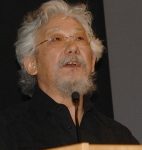January 1 in many parts of the world is a time for new-year resolutions. We reflect on our bad habits and vow to change for the better — to lose weight, quit smoking or be a better person. With the global economy collapsing around us, both China and the United States recently offered up an early resolution for the coming year: to “go green”.
The proposed economic stimulus packages of both countries include potentially promising “green” components. China disclosed a 4-trillion-yuan (US$585 billion) package that designates at least 350 billion yuan (US$51 billion) for biological conservation and environmental protection. Moreover, China’s Ministry of Environmental Protection (MEP) has announced that the stimulus will "not be spent in the energy and resource-intensive industries or high-pollution industries" and will benefit the renewable energy and pollution-control industries.
In the United States, new president Barack Obama also has proposed a package that, in part, creates “green jobs” through business incentives for energy alternatives and environmentally friendly technologies.
These eco-focused stimulus packages may seem counter-intuitive to some, but they mark an important shift in thinking from two of the world’s leading superpowers. In addition, they validate what many of us have known for a long time: that environmental protection and economic growth are not incompatible, as some naysayers have argued.
Given the accelerating trends towards a low-carbon economy, green innovation may well be the key to economic competitiveness in the 21st century. Just compare the fortunes of Toyota and the US automakers. Toyota and its enormously successful hybrid Prius epitomise the potential in green innovation. The nearly bankrupt US automakers – which, time and again, scuttled more efficient cars in favour of petrol-hungry vehicles — represent what happens when the opportunities for green innovation are ignored in favour of the old ways of doing business.
Green innovation not only strengthens economic competitiveness but also creates green jobs. The US Conference of Mayors estimates that some 750,000 people currently hold green jobs in the United States. An analysis by the United Nations Environmental Programme projects that a major shift to clean-energy investments could create up to 20 million new jobs worldwide by 2030. The potential for green jobs in both countries is tremendous and relatively untapped.
The foundations of an economic model based on green innovation require a robust investment in energy efficiency, green buildings, public transit, advanced pollution-control technologies and renewable energy. Studies, like a 2007 McKinsey study on energy productivity, show that these kinds of investment make good economic sense. In both nations, but in China in particular, this new paradigm also will require heavy investment in effective environmental enforcement.
These investments will include accurate environmental monitoring and reporting, well-trained environmental regulators and enforcement officials, public supervision and greater transparency. China has made a good start in this regard by proposing to enhance public participation and transparency in the process of spending the stimulus funds, and such efforts need to be sustained over the long-term.
In fact, the potential for green innovation in China’s economic stimulus package far exceeds what has explicitly been announced, but only if China sets criteria to improve environmental performance for all the investments in the package. For example, China could develop criteria to ensure that the 280 billion yuan (US$41 billion) proposed for housing projects is spent only on green buildings that save water and energy and are located using smart growth principles.
The 1.8 trillion yuan (US$263 billion) proposed for transportation and the power grid should focus on public transit rather than highways, and should ensure that transmission lines are located in areas that will enable China to tap its abundant renewable energy resources. And research-and-development and innovation projects should focus on clean energy, advanced transportation and technologies to improve energy and water efficiency. The stimulus package also could include funding for a comprehensive program of skills development and worker placement to train unemployed people for green jobs, such as industrial-energy auditors and building-energy code inspectors.
Details of the US package still have not been announced, but similar efforts should be made to incorporate green innovation into all aspects of that package. For example, our organisation, the Natural Resources Defense Council (NRDC), and others have proposed a more than US$30 billion energy savings plan that includes energy efficiency retrofits; construction of an improved electricity grid; strengthened energy efficiency standards; policy reforms; training; and more efficient power plants.
New-year resolutions are notoriously hard to keep, though. Like a resolution to quit smoking that does not last past the first month of the year, there are some worrisome signs that the pledges for a green stimulus will not make it into 2009. With tough economic times ahead, there will be pressure on many fronts to cast aside environmental innovation. Some have reported that environmental-impact assessments in China are being hurried through for investments such as coal-fired power plants, in response to the global economic slowdown.
Despite the Ministry of Environmental Protection’s announcement to avoid investment in energy and resource-intensive industries, China’s National Development and Reform Commission (NDRC) recently announced that the stimulus for nine industries includes support for energy and resource-intensive industries such as steel, automobiles and petrochemicals (though some reports suggest that investment dollars here will be channelled towards clean production and renewable technologies).
In the United States, there already is concern that various interest groups are lobbying hard to divert funds away from green projects. In the face of calls for increased environmental protection, powerful interest groups have always lined up in opposition, claiming that these policies would lead to bankruptcy and economic devastation. The urge to buy into these arguments tends to grow stronger in times of economic difficulty. However, to do so would be a terrible mistake.
Time and again industry has responded with innovation, and the economy and the environment have benefited. Some examples of this include the invention of the catalytic converter in response to stricter car-emissions regulations, and ever-more-efficient home appliances in response to stronger energy efficiency standards.
In the end, blatant self-interest is perhaps the biggest reason that the pledges for a green stimulus could be more durable than your typical new-year resolution. Many government, business and labour group leaders have come to recognise that “going green” also can be good for the economy, employment and the bottom line. If leaders of both China and the United States can stand up to the inevitable opposition from some entrenched interest groups to invest in a green economy, history indicates that both the economy and the environment will be the better for it.
So this year, as we slowly forget our pledges to lose weight, exercise more and be better people, let us hope that China and the United States, for their own sakes and ours, keep to their pledges to “go green”.
Alex Wang is a senior attorney with the Natural Resources Defense Council (NRDC).
Barbara Finamore is the director of the Natural Resources Defense Council’s China Program.
For more discussion and analysis of China’s environmental laws, policies and regulations, please go to NRDC’s Greenlaw forum: www.greenlaw.org.cn. This article was first published in the China Daily.
Homepage photo by FAB O LENS’



